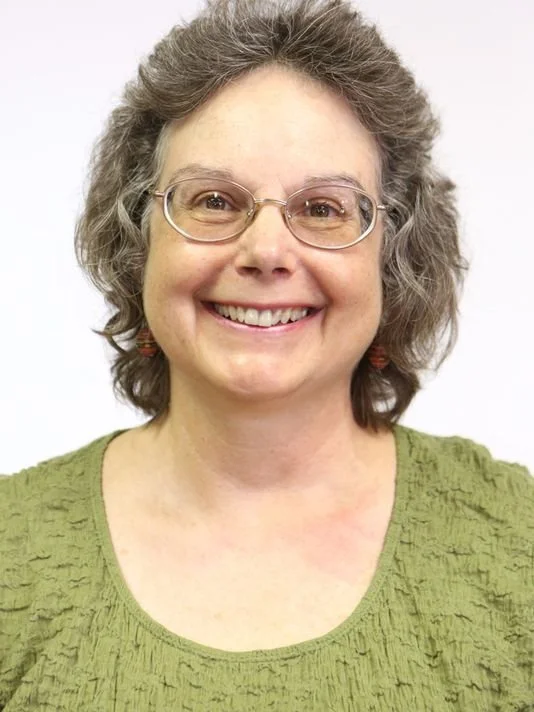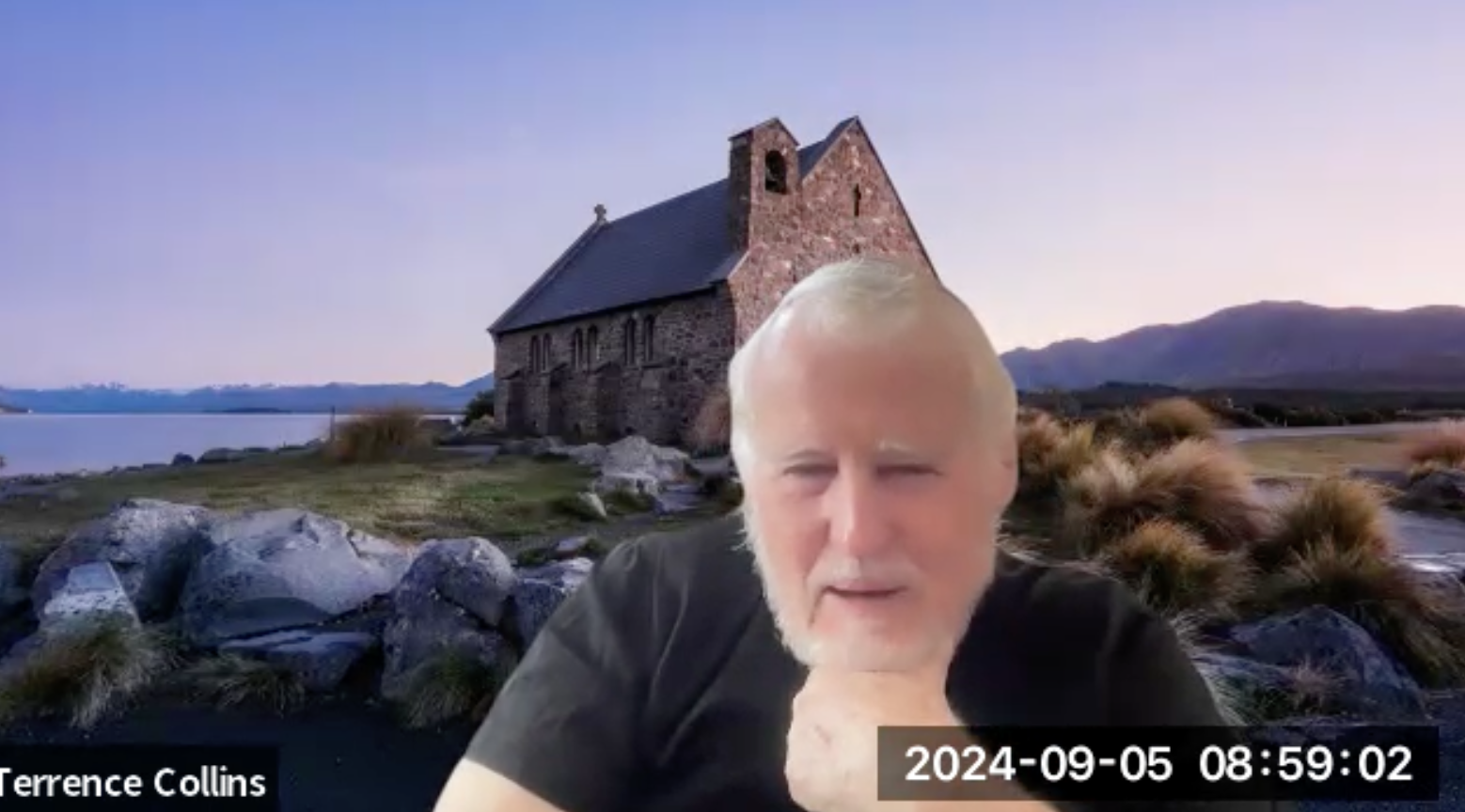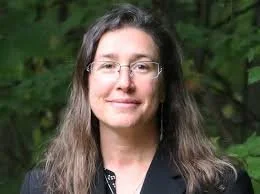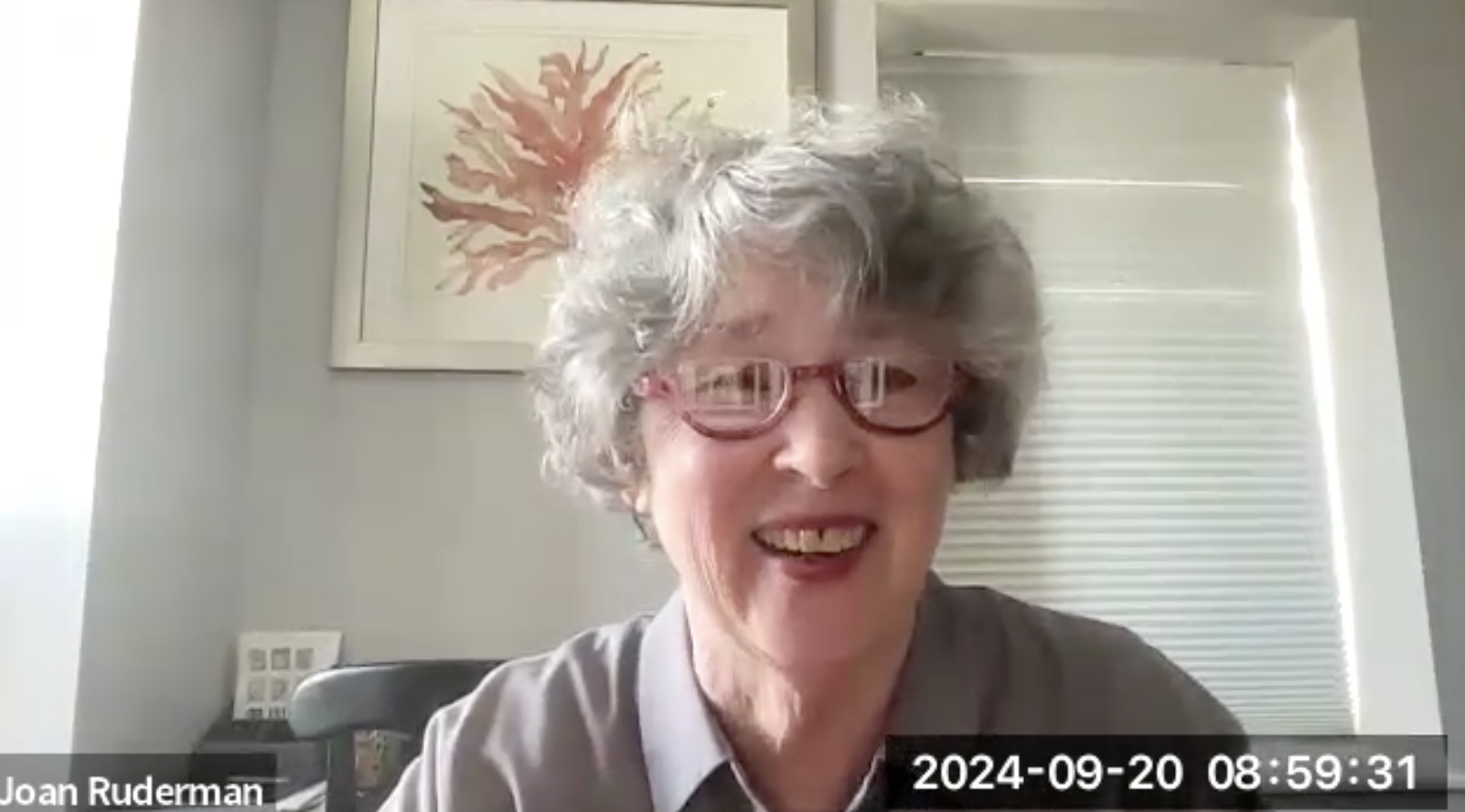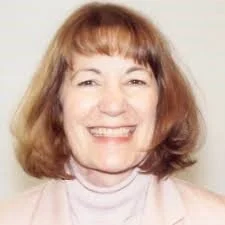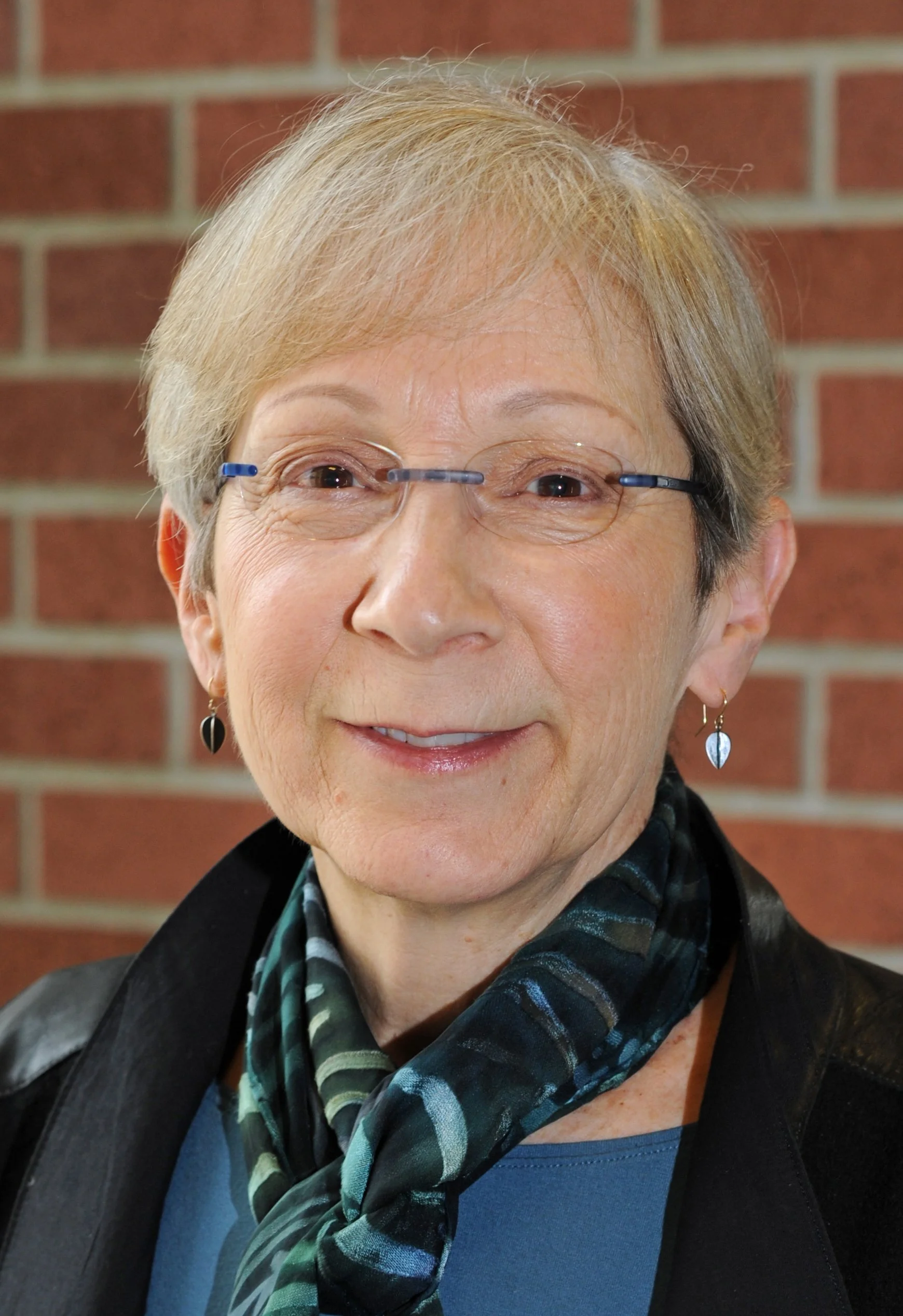I first met Dr. Campbell when I joined the CEH Committee of the Environment Section of the American Public Health Association (APHA) about seven years ago. Right away, I recognized her name as someone whose work was centrally important to my defense of children who are exposed to pesticides. I have long considered the Statement on Pesticides by the American Academy of Pediatrics (AAP), on which she was a co-author, to be a linchpin in the evidence that pesticides cause acute symptoms, cognitive deficits, and cancer. I have talked about it in nearly every presentation on the subject I have given since the statement came out. It is always a thrill to make this kind of connection because while some were doubting and undermining the claims I was making about the importance of protecting children from environmental chemicals, all along, a few unknown allies were working hard towards the same ends I pursued.
Dr. Campbell worked as a pediatrician for many years and now teaches public health in Dornsife School of Public Health at Drexel University. She served as a pediatric consultant for the Childhood Lead Poisoning Prevention Program (CLPPP) of the Philadelphia Department of Public Health as well as chairing the Advisory Committee on Childhood Lead Poisoning Prevention (ACCLPP) for HHS. It has been a pleasure getting to know Dr. Campbell as we have worked on various projects together with the CEH Committee.
August 7, 2024. This interview has been lightly edited for length and clarity.
INTERVIEW
JMK: Hey, Carla – thanks so much for joining me! I really appreciate you spending the time.
CC: Yes. Yesterday was kind of a crazy day – with the [Philadelphia Harris-Walz] rally.
JMK: It’s amazing that you were there. I bet the energy was really powerful.
I wanted to start by talking to you about the American Academy of Pediatrics (AAP) Statement on Pesticides, which came out in 2013. As I said, that was just so influential for me, and I was so excited to learn that you were one of the authors. I wish you would tell me about that. For instance, how did it come about? I know the AAP does not issue statements unless they feel that all the evidence is in.
CC: Yes. There were actually two parts, and in the email you sent me, you had a link to one part, for the policy statement. I also have the technical report, which is much, much longer, which I can email to you, as well as the recent chapter in the Green Book: Pediatric Environmental Health. I have that latest chapter on pesticides.
JMK: I would love those.
CC: Just today, I emailed Paul Spire, who administers the Executive Committee of the Council on Environmental Health and Climate Change. He's been doing that for a very long time. When I was on the committee, he was the administrator, and he still is. There's a larger council on Environmental Health and Climate Change that includes all pediatricians – AAP members who feel drawn to this subject are welcome to join. The Executive Committee actually writes both policy statements and technical reports. The pesticide one was written by Jimmy Roberts and Catherine Karr. Jimmy is down in South Carolina, and Catherine Karr is at the University of Washington – they are both excellent pediatricians. Both of them had a specific interest and expertise in pesticide exposure.
The way that the committee works is that usually, you have a couple of authors who provide a first draft, and then the committee offers input, and then it goes back to the co-authors. There is a back-and-forth process to revise. And then it goes out to all the relevant AAP committees, including the Committee on Nutrition or food, for instance, since pesticides are an ingestion issue.
It’s a very long process. It usually takes at least three years to get it published in Pediatrics. I was not involved in the drafting, where they compiled the bulk of the information, but I was involved in the review process over and over again until it got published.
JMK: That’s wonderful. So it was really Roberts and Karr who said we need this, let’s start the process?
CC: I honestly don’t remember who brought up the idea, but usually the co-authors have a passion, and then they trigger the formal process – the two of them would be chartered to write the report with the help of the committee.
JMK: It was so important, because still, most pediatricians have no training. It's not even on their radar. At least, that was our personal experience – nobody knew what they were looking at when my kids were acutely ill from exposures.
CC: More than one child was ill from exposures?
JMK: Yes. Katherine and David both had acute asthma symptoms, and yet had never had asthma before. They were treated with albuterol and diagnosed with asthma. Those symptoms went away, but Katherine emerged from that episode with leukemia, and we only put the pieces together later that she had had that exposure to chlorpyrifos through mosquito spraying.
CC: Wow! Where was the mosquito spraying?
JMK: In our town, where we live still: Warrenville, Illinois, in the west suburbs of Chicago. It's so common, but they do it at night, typically, so many people have no idea that it's going on. And of course the pesticide companies are fine with that.
CC: We have a cabin in Maryland, and the little community used to spray against mosquitoes and maybe other bugs. I think they stopped it, not to my credit, but it was a good idea that they stopped it. They just race up and down the streets spraying this stuff into the air. They would usually give a warning to folks, but….
JMK: Yes. We were not even warned. There was a little notice in a newsletter we never saw. And we got it stopped, or we would have moved, but it was too late for Katherine.
CC: Oh, that is such a shame!
JMK: Thank you. It is. It does inspire me to try to prevent things like this happening to lots of other children. And I'm so grateful I found this community at American Public Health Association (APHA) of other people who feel likewise. I mean, what else can we do? We just have to keep working to make change.
CC: Now, where you are at Benedictine, is there an environmental and occupational health department?
JMK: No. Our public health program is small, just a few faculty running the whole program along with a quite a few adjuncts. Actually, they're thinking about enlisting me to teach the environmental health class next time it comes around. We have only about a hundred faculty for the whole university.
CC: Oh, wow!
JMK: Different from a large university like those you've worked at.
CC: Yes – like Drexel and UTEP.
JMK: I tend to do interdisciplinary projects. I teach environmental literature and science writing and global environmental health.
CC: Wow – great!
JMK: I also want to get your origin story. So how did you get where you are now? Was there anything in your early training, or childhood, that inspired you to focus on environmental health?
CC: It was not until I went to medical school that I was involved with the American Medical Student Association (AMSA), which was progressive students who were into progressive health care issues. I’m sure we tapped into environmental issues, but I don’t remember specifically children’s environmental health or lead poisoning coming up. But then when I trained in pediatrics at University of Kentucky College of Medicine, I developed quite an interest in lead poisoning prevention. There wasn’t a lot of blood lead level (BLL) screening at that point in Kentucky, though there was some. We had some kids with elevated levels – nothing as high as I was later to see in Philly, which was a totally different story.
Prior to med school, I trained for a year as a Physician’s Assistant (PA), and then I did pre-med coursework, and then I spent a year applying to med school and working at Mt. Sinai in the environmental sciences lab. I forgot about that!
JMK: I saw that on your résumé.
CC: That triggered an interest initially in occupational and then in environmental health issues. And then when I did my peds training, the lead poisoning prevention was a natural fit for someone with environmental health interests. It still is one of the major exposures for children.
JMK: If we get another term with Harris, we should be able to get through more investments and change more infrastructure, so that we have fewer lead exposures.
CC: Biden has put in the Infrastructure Plan – billions of dollars to switch out the lead service lines in homes around the country – it is not enough to change all, but it’s a significant drop in the bucket.
JMK: So you've been in the field for a long time. What would you say are the most important findings you've seen come about? And then, what work have you done that you're most proud of?
CC: I think there has been a lot of progress. After I did my peds residency, I went back to Mt. Sinai in New York, which was a major training hub, and did a residency in occupational and environmental preventative medicine. At that point, there weren’t pediatric fellowships in environmental pediatrics. The occupational piece was older – the environmental was coming up as a newer field, and particularly in regard to children’s environmental health.
Now, we have such a big research database. Findings have increased so substantially since I graduated. I left Mt. Sinai in 1988. Since then, there has been so much research. Now pediatric departments have post-residency training in pediatric environmental health. There are the PEHSUs, the Centers in Children’s Environmental Health Research. There is so much more – it’s really grown quite a bit. Leaders in this field have included the two co-authors of the Children’s Environmental Health textbook that I use in my course – Phil Landrigan – who was my mentor at Mt. Sinai – and Ruth Etzel. They are some of the giants in the field. In their textbook, they talk about some of the earlier folks – Dr. Herb Needleman and Dr. Robert W. Miller, who also pioneered the field. AAP eventually created a committee on environmental health, which is now this Council on Environmental Health and Climate Change. They’ve come a long way too. AAP has done their bit in terms of trying to move this field forward. APHA has as well, to their credit, and particularly in the Environment Section and the committee we are on due to the leadership of Leyla McCurdy. I think that's done some significant work as well in the public health field. I am in a department of environmental and occupational health at Drexel. There aren’t that many people involved with children’s stuff. It's mostly more general or occupationally focused, but it’s nice to be part of that group of folks who are in the field and know the lingo. They are dedicated to that specific field of study.
JMK: Yes – absolutely.
CC: So your second question was, what do I consider some of my greatest accomplishments? I was involved in two national-level committees. The first one was the Advisory Committee on Childhood Lead Poisoning Prevention (ACCLPP) for Health and Human Services (HHS) – I was on that for eight years as a member and six years as the chairwoman. We put out a number of publications during that time, of which I am really proud. We had Guidelines for the Identification and Management of Lead Exposure in Pregnant and Lactating Women (CDC 2010), which was a real need because obstetricians didn’t know what to do with women who might have been exposed to lead. And then A Housing-Based Approach to Primary Prevention of Lead Poisoning looked at the housing piece, which is obviously very important since one of the major exposure routes is lead-based paint in older housing, as you are well aware.
We published Managing Elevated Blood Lead Levels (BLLs) among Young Children, which was more clinically oriented, and Preventing Lead Poisoning in Young Children. This looked at evidence for adverse effects of BLL of less than 10 µg/dL. Now the BLL reference value is 3.5, but back in the day, we were looking at 25 at one point, and then 10. It has gone down as we know more and more about the adverse effects. I consider that committee produced important work. Chairing it for six years was a challenge, but I think we got some good work done and helped some kids along the way.
JMK: Yes – definitely! I always start my presentations with that chart on lead that shows that when I was a child, 88.2% of kids were over 10µg/dL of blood. And then the more recent data is something like 1.2. That's just incredible.
CC: Above 10 is what I'm usually seeing as a clinician. The geometric mean has dropped significantly, but there are still kids out there getting exposed. It has improved. The problem has been under greater control than it was back in the 1980s and 1990s and 2000s. So we're seeing a lot of progress.
The other committee I was on, as you know, was the Executive Committee for the Council on Environmental Health of AAP. That was really a nice committee to be on because I was there with like-minded pediatricians. There aren’t that many pediatricians who are interested and knowledgeable about environmental health, so it was great to be on with a bunch of colleagues doing good work, putting out policy statements and technical reports, such as the pesticide one that you saw.
Later on, we were involved in the Pediatric Environmental Health (PEH) Green Book – I don’t remember what edition we were on – two or three. Recently, I revised a chapter for the fifth edition. That’s been very fruitful work. I would say being involved in those two committees as well as the clinical work I did taking care of children with lead poisoning in Philadelphia was my most important work. I don’t consider myself a researcher, but I was involved in three or four studies, mostly in lead poisoning. And that was fun work too, learning more about what to do in terms of optimal prevention and treatment of kids.
JMK: That green book is so great because it collects all that knowledge in one place. Do you think most pediatricians use that and have it on their bookshelf? What's your sense of that?
CC: The people I know do use the Green Book – and at least it is available through the AAP. A member has to pay something toward it, so I don’t think it’s given out free. It’s probably not as popular as the Red Book, which is the infectious disease book. But I think it’s gaining popularity. It’s an excellent resource – just wonderful for residents, practicing physicians, or anybody.
I have stopped doing clinical – right now, I am just involved in the teaching of Public Health. But I was at Children’s Hospital in Philadelphia for about twenty years. I saw mostly low-income African American kids from the inner city of West Philadelphia, and there was a lot of lead poisoning amongst those kids. Our clinic was a referral clinic, so we saw kids from the region – Latino and Asian and a few white kids. It was a pretty big mix – a diverse group of patients. Occasionally, kids had to be admitted to the hospital for chelation therapy if their levels were really high.
JMK: It's unfortunate that there isn't really a way to reverse the damage done by lead exposures, although I've talked to other people who said they always try to emphasize that there are ways to compensate for exposure afterwards, and that there are a lot of enrichment activities that can help.
CC: The lead exposures in Flint, MI weren’t really that high compared to a lot of exposures we had in Philly, but I know Hanna Mona-Attisha in Flint has developed a whole program where she is trying to provide enrichment to counteract the deficits on cognitive development. She’s trying to enrich their environments. When I was talking with parents, I would say children had an increased risk of adverse effects. I never gave them the impression that if their kid had an elevated level of 10, their kid was going to get ADHD. That doesn’t mean that any specific child is going to end up with those effects.
JMK: Right. You don't want to have a self-fulfilling prophecy or nocebo effect.
CC: I tried to be upbeat with parents. Most were fairly concerned about the problem – I didn’t want to get them depressed about it or feel that there was nothing they could do.
JMK: You've really anticipated my next question, which was, how do you talk to parents about this? Because of course it's important to alert them to the risks. But then yes – it creates so much anxiety. Any other thoughts about that communication piece?
CC: I think presenting it as a possibility of adverse effects but not a probability is important. If your child was found to have any of these problems, there are things we can do to ameliorate the effects. It’s important, as you were saying, to give them hope that they can improve the cognitive development or ADHD. There are ways to improve children’s lives and performance in school. Behavioral issues can be referred to a behavioral pediatrician, psychologist, or psychiatrist. There are things that can be done. The parent doesn’t have to feel hopeless.
JMK: Yes. And of course, many probably would never know that their kids had been exposed. I suppose it was mostly symptomatic kids who showed up in your clinic?
CC: Actually, that’s interesting. You have to have a pretty high lead level to be symptomatic. Even with a high lead level, some were not symptomatic. A lot of these kids were caught by routine screening of BLL. Pennsylvania doesn’t even have a great recommendation. Right now, it’s a recommendation of one test before the age of two or three. The language is changing. Other states have tests at ages one and two – and of course, all Medicaid children get that testing. That’s a mandate. For other children, it’s dependent on the state or city. Philadelphia is stricter with its recommendations – it’s ages one and two.
JMK: That is so important. Once we moved to the older house, I was more careful with cleaning up dust and would just routinely get the kids tested, and nobody had more than 3µg/dL.
CC: Oh, that's good!
It really is important – but primary prevention is important too. The other important thing is to talk to parents about getting their home screened, which is expensive unless the local health department does it. Most public health departments do not go out and do environmental investigations unless there's a kid with an elevated BLL. Parents, if they cannot shell out the $400 for a lead inspection, are really out of luck. Or they may find the lead hazards in the home, but they may not have the money to remediate, and if they do it on their own, that can create a whole lot of exposure if people aren't doing it properly.
JMK: Yes. I knew of someone who sanded down walls and woodwork, and their child was badly poisoned.
CC: It’s terrible. Or people burn surfaces with an acetylene torch or a heat gun, where you heat up the paint – and then scrape it off. There are a lot of methods out there. Now the EPA has passed the RRP—Renovation, Repair, and Painting Law – ten or twenty years ago, and it requires that if you are employing someone to do painting, they are supposed to be following lead-safe practices mandated by the EPA. I'm sure there's a lot of work that goes on that doesn't use that caution.
JMK: I had an interesting experience with a recent plumbing problem. We were going to have to have the ceiling cut into. And the contractors were kind of cagey about it. They suggested we test, but understood if we didn't want to test. I said that I would be the biggest hypocrite in the world if I didn't say yes – test – do whatever's required to be safe. And it seemed important to the workers to protect kids in the household, but yet it seemed like there was some room for negotiation if I had protested. It is funny to see it from that other side.
CC: Supposedly, people are out there supervising these things, whether on the EPA, Federal, or state level, but I am sure a lot of people do the work without the precautions, unfortunately.
JMK: I'm glad that we do something now, that people receive training, and that they were aware that it could be a health risk for themselves and for other people in the house.
CC: And for their own kids. The take-home exposure is another issue. If they are covered with lead dust and go home, and then their partner is laundering the work clothes – the lead dust can get everywhere, and there is a lot of potential for exposure.
JMK: Yes, and that that was a major route of exposure for asbestos – laundering work clothes.
Okay. The next question is, if you were somehow magically able to single-handedly recreate US policy regulating environmental chemicals, what would such a policy look like and how do we change going forward?
CC: Well, I think TSCA has been an abject failure. The law was revised a few years ago, but it still does not evaluate new chemicals that come into commerce before they are put into mainstream usage and manufacture. Ideally, that is what such a law should be doing – evaluating anything new coming in, and if it is found to be unsafe, then stopping its usage or at least getting more data, waiting until there are more studies done in terms of adverse effects.
I don’t know if you are familiar with the European REACH program – essentially, they use the Precautionary Principle. You look at the possible adverse effects before exposure, and you have to prove the innocence of the compound before it can be used instead of using the compound and then finding out years later that it causes cancer or asthma or other adverse effects. I would model it much more after the REACH program. I thought that seemed like a really good approach, one that uses the precautionary principle.
I think in this country, there is way too much influence of corporations in our government, with politicians – even with the President, the White House – and certainly in Congress. The result is some people thinking that all these wonderful chemicals are scientific progress. They think we have all these wonder chemicals that are doing so much for our lives. And now the big issue is plastics – how widespread their usage has become – and so many adverse effects and exposures. All of us have plastics in our bodies now, as well as a whole host of other chemicals, which the CDC monitors. So I would do it entirely differently than the current EPA.
JMK: Yes – you're not the first one to say that. I had the opportunity to talk to Richard Jackson, who was really instrumental in getting that program of biomonitoring at the CDC.
CC: Yes. He headed up the National Center for Environmental Health (NCEH). Actually, part of the time I was chairing that CDC committee, he was the head of the NCEH, so the committee (ACCLPP) fell under his purview. He is a good guy. Is he still at UCLA?
JMK: Yes. I really enjoyed interviewing him. If you are interested in what he is doing, the interview is on my blog. He has a really neat lecture on Vimeo – he's been touting the benefits of a healthy built environment lately. He talks about how our current planetary and health threats amount to a syndemic. And he has a lot of other good ideas.
I'm going to ask you the big question for both the previous book and this one I'm working on now: if we know that we are poisoning all our children, and that we're destroying the climate on the only planet known to support life, and that there are solutions right there for the taking and yet we are not implementing them, why is that? Or I've been summarizing this, although perhaps I shouldn't, as – how could we be so stupid?
CC: I think it’s a couple of things. One of them is ignorance, and the other is this heavy influence of the corporations that are involved in manufacturing the chemicals and involved in fossil fuel proliferation. The government relies on these entities, relies on them to be honest citizens and entities, doing the right thing in creating scientific progress. Well, it isn’t progress if you are poisoning your people and the planet, as you point out.
That’s the problem – along with the ignorance. It’s becoming more commonplace, however, to see articles in newspapers and magazines – there is a gradual education of the American public about environmental issues, and particularly climate change. It’s too little – but it’s not too late. I think we could step it up, especially public health and medical professionals. When I was in school, there was very little information given in medical school on environmental issues, and I think still, that has not really improved a lot over time. We need more education. But we also need people standing up to the corporations that are going to continue to make profits off polluting the atmosphere if they are allowed to do it. I probably sound like Bruce Lanphear.
JMK: Yes. Well, that’s a good thing – right?
CC: Yes. That’s a good thing. [We both laugh.]
JMK: He was one of my first interviews.
CC: I looked at some of your interview with him. I would like to read or listen to more.
JMK: Unfortunately, it's not a podcast because I think people are self-conscious; not everyone wants their voice broadcasted. It's a transcript. After the fact, I realized it might be nice to have a podcast because people do like that format, but I had already designed the project. Perhaps in time, I will revisit that.
CC: Yes. I think it's a wonderful project that you're doing. I'm really impressed, and I'm grateful that you're bringing this subject out into the light. Do you hope to get more of a general audience or more of a public health audience? Or have you really thought about who you might like?
JMK: So I'm going for an academic crossover book. Yes, academic, but I want to write it in a way that someone might pick it off the shelf and read it. University of California Press has some of these, like Deceit and Denial and Lead Wars by Markowitz and Rosner.
That's the kind of bandwidth I'm going for, but I would really like to get crossover readers.
CC: Oh, I'm anxious to read it when it comes out.
JMK: Thank you! The next question asks you to look in your crystal ball a little bit. What do you think will be the status of children's health in the year 2050?
CC: 2050. Wow! This is 2024. Well, I would like to think that pediatricians and healthcare providers seeing children and public health folks will all be on the bandwagon to learn more about children’s environmental health (CEH) and preventing exposures – and how to put pressure on the corporations not to expose the population. I would like to think that by 2050, all that would have occurred and that the state of children’s health would be improved. As I said, I have seen a lot of progress since my peds residency in 1985. I am hoping that that continues, but it takes a lot of folks doing good work on a regular basis for that to happen.
JMK: Yes. That's one reason I feel so happy to know the people who are working on this, especially as a parent who lost a child to these kinds of exposures. I can hardly describe my gratitude that at least some smart, dedicated people are working on this problem. So I share your hope that things will be better. It's just a little discouraging sometimes. For instance, who would have thought 20 years ago that microplastics would be the problem that we know now that they are? I thought that plastic was more or less inert, and not one of the biggest threats to health.
CC: Yes. And apparently, on the climate change issue, Jim Hansen and Bill McKibben have been talking for decades about the adverse effects and consequences to deaf ears for the most part, particularly when it comes to governmental action to control the fossil-fuel companies. It has been a long time coming to get the level where we are now. But it may almost be too late, as we see from all these extreme weather events – the hurricanes, the wildfires, the tornadoes, the rains, the flooding, the heat waves – all of that – making that connection.
JMK: Yes – it is really upsetting to think how bad it’s gotten already. And of course, we’ve locked in a lot of warming. But every fraction of a degree counts.
CC: Yes. I haven’t lost hope, but it’s frustrating, and I’m sure the people who are more heavily into climate change – I’m not doing stuff night and day – but there are pediatricians out there who are, and it must be frustrating.
JMK: I have talked to some of pediatricians out in California – Lisa Patel, Amanda Millstein, and Mark Miller, to name a few. In California, you're seeing the fires every day.
CC: Yes. Jerry Paulson, in Virginia, actually chaired the Executive Committee on the Council for Environmental Health of AAP when I was on the committee, and he’s very dedicated to doing climate work. Samantha Ahdoot is another one. She co-authored the AAP statements, the policy statement and the technical report on climate change. So there are some folks out there that are really, really active.
JMK: That is inspiring. Something I hope to do with this work is first of all, to put together the broad perspective of how many environmental impacts are affecting our children now, so that people understand it's not just one thing or the other, lead or microplastics – it's the whole conglomerate. But then, also, it's inspiring to see that some people are working more on climate change, some people on lead, some on environmental chemicals; some are focused on cancer, some are focused on cognitive impacts. That is a hopeful thing, just to know how many people are working on it.
We find hope where we can.
Are you still in touch with patients or parents like me?
CC: I have lost touch with those folks – it has been about ten years since I did clinical care.
I directed the Lead Clinic at The Children’s Hospital of Philadelphia for eleven to twelve years, but in 2007, they shut it down. We were a regional referral center, but they no longer wanted to sponsor it in the primary care pediatrics department. Basically, it took them about a year – I resisted. But when the writing was on the wall, I had to accept that they were closing it down.
JMK: That is such a shame!
CC: The need was there. We didn’t have the numbers we once had had, which was good, but we still had a substantial number of patients, referred from all over the region, not just the City of Philadelphia. That was a lost resource for the community and the region.
JMK: If there were resources like that nationwide, then there would have been more resources there for the people of Flint, Michigan. It's really tremendous that Mona Hanna-Attisha worked so hard, but it’s a shame such action was necessary.
CC: I read her book, What the Eyes Don’t See. It was quite interesting – her story of uncovering that this switch in water led to increased levels of lead in water and in children. There were forces trying to shut down the information and sweep it under the carpet. The usual.
JMK: Yes. It's very sad, but not surprising, even judging from my own experience, how the parents weren’t listened to. Thank goodness they had a few advocates who really brought it forward. When I talk to my students, that is one of the few examples of children's environmental health that they know anything about: lead and Flint. I tell them it’s not just lead, and it’s not just Flint. But at least they have that point of contact.
CC: Yes. Flint, Michigan is a way to open for discussion about environmental impacts in general.
JMK: Definitely.
Okay – last question: We have gotten to know each other. But do you have any questions about the project or about my experience?
CC: Well, I guess I'm a little curious how you got into children's environmental health.
JMK: It really started with Katherine getting sick and then dying, during which time we found out about the mosquito spraying that we believe caused her leukemia. First, I got my city to stop spraying. Katherine and David and I went door to door. We persuaded people not to fund mosquito spraying anymore. And then, after she died, we went after lawn chemicals in our City.
It was quite the David-and-Goliath experience because even before she died, I sent out an annotated bibliography of the current research showing connections between these kinds of chemical exposures and cancer, autism, lower IQs, ADHD, and other ailments.
I didn't even make many comments on the information. I just sent out the annotated bibliography to every municipality in our county, and that's when the spraying company threatened to sue us for libel and slander.
CC: Oh – well!
JMK: So I pulled back on that effort for the time being. But I thought, I am not going to let this lie. I realized I needed credentials, and also, I was retraining because after Katherine died, all the previous literary writing I had done seemed pretty meaningless. I love writing about medieval and Renaissance literature, but ultimately, it doesn't do much good in the world, aside from enabling me to frame the argument as I did in Environmental Legacies of the Copernican Universe. I was retraining myself in environmental literature, but then realized that if I wanted to be an activist, I really needed additional credentials, and so almost as a lark, I looked at the programs I could do at my university, and found I could do an MPH, almost for free.
I realized that what I really am interested in is environmental health. And so I did one class at a time. At first, I thought that I would just do statistics and epidemiology because I really needed those. But then I just kept going. It took me six years. Ever since then, my efforts just blossomed. Susan Buchanan, head of the Pediatric Environmental Health Specialty Unit (PEHSU) in Region 5, was so kind as to advise me during my internship, and then she put me in touch with all of you at APHA and UCSF. Being on zoom has enabled me to join webinars, attend meetings, and chip in and participate. And so it’s just grown from there.
CC: And now you are on the CHPAC! That's really impressive. I wouldn't mind being on if you can let me know if they ever have a call for more members.
JMK: Absolutely. I think they will call for it in about a year.
CC: Tyra Bryant-Stephens was an asthma expert on the CHPAC, and I think she really enjoyed her stint on the committee.
JMK: I really enjoy it. I get a real perspective about how it is that the EPA is awfully busy without being effective in regulating these chemicals. The people on the committee are just amazing. I've read their work for a long time – Marya Zlatnik out at UCSF, Kari Nadeau at Harvard. So far, I've interviewed Marya and Leslie Rubin – lovely people.
CC: I really enjoyed national committees with folks from all over with different types of expertise.
JMK: If you had not told me about Mount Sinai, I would have asked about that because of course, they are well known – Phil Landrigan and many others.
CC: Irving Selikoff, the father of research on asbestos-related disease. He was an old-timer, long dead now, but he did some great work in uncovering the adverse effects of asbestos. He came to our wedding!
JMK: Wow!
CC: Ron and I were married some forty years ago, and he came to our wedding and gave us a copy of a historical medical book as a wedding present. He was a great guy. And then Phil Landrigan was there.
JMK: That's wonderful. I had asked Phil if he was able to talk with me, and he says he doesn't have time right now. I think he's working on a new program at Boston University….
CC: Boston College. He's an amazing guy – I really admire his work. He and Ruth Etzel have done so much to further this field. But there are lots of worker bees out there, so that’s the good news. A bunch of other folks have come forward to work in this area.
JMK: Yes. That is very heartening. Ruth did talk to me, and once she has a chance to approve the blog, I will post it – perhaps yet this summer.
I feel a little starstruck to work with y’all because I have been reading your names for so many years.
CC: Well, this was great. I really enjoyed it and am anxious to see the results.
You’re on the Maternal and Child Health (MCH)/environmental advocacy group too, right?
JMK: Yes. Abbey Alcon has been great – I might like to talk to her.
CC: She’s really come on as the MCH person and has done a wonderful job with the advocacy sheets she’s put together.
JMK: And she has the nursing perspective, which would be good to get.
CC: I think she’s a nurse practitioner. You know there is a nurses’ group – the Alliance of Nurses for Health Environments (ANHE).
JMK: Oh yes – Katie Huffling is on the CHPAC – I would like to talk with her as well.
I really appreciate your taking the time, and I hope you enjoy the rest of your summer!
CC: Yes – you too. Take care!

